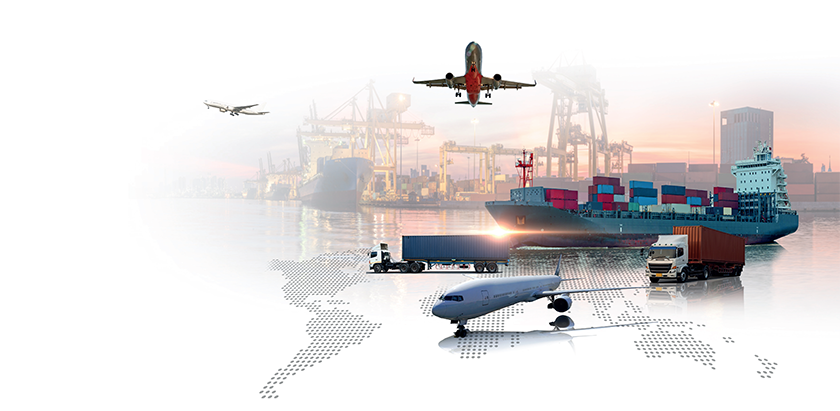
Big decisions
The conflict between Russia and Ukraine and the resulting sanctions has impacted supply chains across the world. In this article we will look at the evolution of the sanctions on Russia and how these differ from previous sanctions, how this impacts logistics, particularly from Asia to Europe, and the impact of the conflict on energy commodities such as coal that impact global supply chains.
Sanctions related to Ukraine have been applied to Russia since the 2014 annexation of Crimea, targeting 735 entities and restrictions in trade in energy and defense products and selected financial restrictions.
Since the start of the conflict, the use of sanctions has been rapid and widespread and includes: restricting access to the SWIFT payment system; limiting export licenses across high tech and industrial machinery; and restrictions on imports of Russian products and services and; freezing the assets of individuals and entities close to the state.
For many countries these sanctions are unusual, they are more widespread than in the past, causing higher commodity costs across energy, metals and food – all of which are highly visible to voters.
The breadth of the sanctions means there are many areas impacted:
Logistics
Rail freight for shipping from China to the EU (moving through Russia) has grown by 28 percent annually over the past five years, and sanctions look set to leave automotive and capital goods shippers exposed and looking for alternatives – principally via ocean shipping.
In recent years, railways have been essential for augmenting ocean and air freight shipping on Far East Westbound (FEWB) routes, and their role has been central to the Chinese government’s Belt and Road Initiative. They are also quicker than ocean; Guangdong-to- Germany routes typically take 20 days via rail compared to over 100 days currently (as shown in Flexport’s Ocean Timeliness Indicator).
Apparel may need new routes
Among consumer goods, 2021 saw a rapid growth in shipments of both homewares and apparel using rail, reaching 4.9 percent and 4.8 percent of imports, respectively, in 2021. Apparel is also the most valuable consumer product group, with 2.4 billion euros shipped from China to the EU by rail in 2021.
Without the rail link, we may see changes in how fashion brands are able to plan seasonal lines (with average shipments increasing by five times moving from rail to ocean), and goods will also become more expensive as pressure on ocean services increases.
As businesses can’t ship as quickly and regularly with current supply chain disruptions, they will need additional capital to support shipments that will enable business growth. Flexport is currently helping customers with the launch of Flexport Capital, providing growing companies with quick access to working capital financing without the added constraints typical from other lenders.
Trade gets more complex
Aside from physical restrictions to logistics networks, the process of working with Russian suppliers and customers has been complicated by the likely loss of Most Favored Nation status for Russia with the US, EU and other G7 members. That removes normal trading relations leading to higher tariffs and increased red tape.
Companies in countries that have not yet applied sanctions are also beginning to reduce their work with Russian firms in order to avoid triggering so-called secondary sanctions by the US and others.
Higher energy costs, with potentially more to come
On April 8th, the European Union approved new sanctions that will ban Russian coal imports and a wide range of other products including caviar, building materials, wood products and furniture. The EU is also in the process of implementing a ban on imports of oil while restrictions on natural gas shipments remain less likely for now.
The measures impact all types of coal, which could have an impact on both the energy generation and steel production industries. Russia accounted for seven percent of EU coal use in 2020, though that rises to over two-thirds for Latvia, Croatia and Denmark.
Rising energy costs resulting from restricted supplies will also have a knock-on effect for fertilizers (and hence food), cement manufacturing and petrochemicals. In turn the industries using those products as inputs will face cost inflation which in due course may arrive with consumers.
Branding and supply chain decisions to be made
With sanctions on Russia set to continue, and new lockdown regulations in China, companies face the reality of continued upheaval and unpredictability in supply chains. Many are starting to reconsider what the ideal operational organization should look like.
Should brands diversify sourcing of goods from more countries? How can they rethink their product design and manufacturing to use alternative components? How early should they start ordering goods for the 2022 holiday season and will they need to expand their storage capacity?
The situation in Ukraine and related sanctions continue to move rapidly but could remain in place for years. We’ll continue to monitor developments and the corporate supply chain decision-making that goes with them.
 Chris Rogers is a Supply Chain Economist at Flexport. Flexport is a freight forwarding and customs brokerage company based in San Francisco, California. It believes trade can move the human race forward. That’s why it’s the company’s mission to make global trade easy for everyone. Flexport is the platform for global logistics – empowering buyers, sellers and their logistics partners with the technology and services to grow and innovate. Companies of all sizes – from emerging brands to Fortune 500s – used Flexport technology to move nearly $19B of merchandise across 112 countries in 2021.
Chris Rogers is a Supply Chain Economist at Flexport. Flexport is a freight forwarding and customs brokerage company based in San Francisco, California. It believes trade can move the human race forward. That’s why it’s the company’s mission to make global trade easy for everyone. Flexport is the platform for global logistics – empowering buyers, sellers and their logistics partners with the technology and services to grow and innovate. Companies of all sizes – from emerging brands to Fortune 500s – used Flexport technology to move nearly $19B of merchandise across 112 countries in 2021.
https://www.flexport.com/